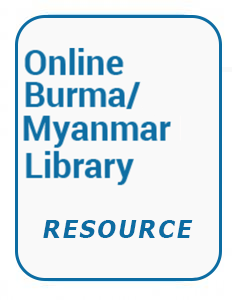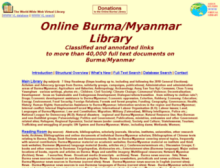Resource information
Executive Summary: "The remote and environmentally rich Hugawng valley in Burma's northern Kachin State has been internationally recognized as one of the world's hotspots of biodiversity. Indeed, the military junta ruling Burma, together with the US-based Wildlife Conservation Society, is establishing the world's largest tiger reserve in the valley. However, the conditions of the people living there have not received attention. This report by local researchers reveals the untold story of how the junta's militarization and self-serving expansion of the gold mining industry have devastated communities and ravaged the valley's forests and waterways.
The Hugawng valley was largely untouched by Burma's military regime until the mid-1990s. After a ceasefire between the Kachin Independence Organisation (KIO) and the junta in 1994, local residents had high hopes that peace would foster economic development and improved living conditions. However, under the junta's increased control, the rich resources of Hugawng valley have turned out to be a curse.
Despite the ceasefire, the junta has expanded its military infrastructure throughout Kachin State, increasing its presence from 26 battalions in 1994 to 41 in 2006. This expansion has been mirrored in Hugawng valley, where the number of military outposts has doubled; in the main town of Danai, public and private buildings have been seized and one third of the surrounding farmland confiscated. Some of the land and buildings were used to house military units, while others were sold to business interests for military profit.
In order to expand and ensure its control over gold mining revenues, the regime offered up 18% of the entire Kachin State for mining concessions in 2002. This transformed gold mining from independent gold panning to a large-scale mechanized industry controlled by the concession holders. In Hugawng valley concessions were sold to 8 selected companies and the number of main gold mining sites increased from 14 in 1994 to 31 sites in 2006. The number of active hydraulic and pit mines had exploded to approximately 100 by the end of 2006.
The regime's Ministry of Mines collects signing fees for the concessions as well as 35% - 50% tax on annual profits. Additional payments are rendered to the military's top commander for the region, various township and local authorities as well as the Minister of Mines personally. The junta has announced occasional bans on gold mining in Kachin State but as this report shows, these bans are temporary and selective, in effect used to maintain the junta's grip on mining revenues.
While the regime, called the State Peace and Development Council or SPDC, has consolidated political and financial control of the valley, it has not enforced its own existing (and very limited) environmental and health regulations on gold mining operations. This lack of regulation has resulted in deforestation, the destruction of river banks, and altering of river flows. Miners have been severely injured or killed by unsafe working practices and the lack of adequate health services. The environmental and health effects of mercury contamination have yet to be monitored and analyzed.
The most dramatic effects of this gold mining boom, however, have been on the social conditions of the local people. The influx of transient populations, together with harsh working conditions, a lack of education opportunities and poverty have led to the expansion of the drug, sex, and gambling industries in Hugawng valley. In one mining area it was estimated that 80% of inhabitants are addicted to opium and approximately 30% of miners use heroin and methamphetamines. Intravenous drug use and the sex industry have increased the spread of HIV/AIDS. Far from alleviating these social ills, local SPDC authorities collect fees from these illicit industries and even diminish efforts to curb them.
The SPDC continually boasts about how the people of Kachin State are benefiting from its border area development program. The case of Hugawng valley illustrates, however, the fundamental lack of local benefit from or participation in the development process. The SPDC is pursuing its interests of military expansion and revenue generation at the expense of social and environmental sustainability
This report documents local people speaking out about this destructive and unsustainable development. Such bravery should be encouraged and supported.".......The main URL for this document in OBL leaqds to a 1.5MB version, obtained by passing the original through ocr software. The original and uthoritative version can be found as an alternate link in this entry.


